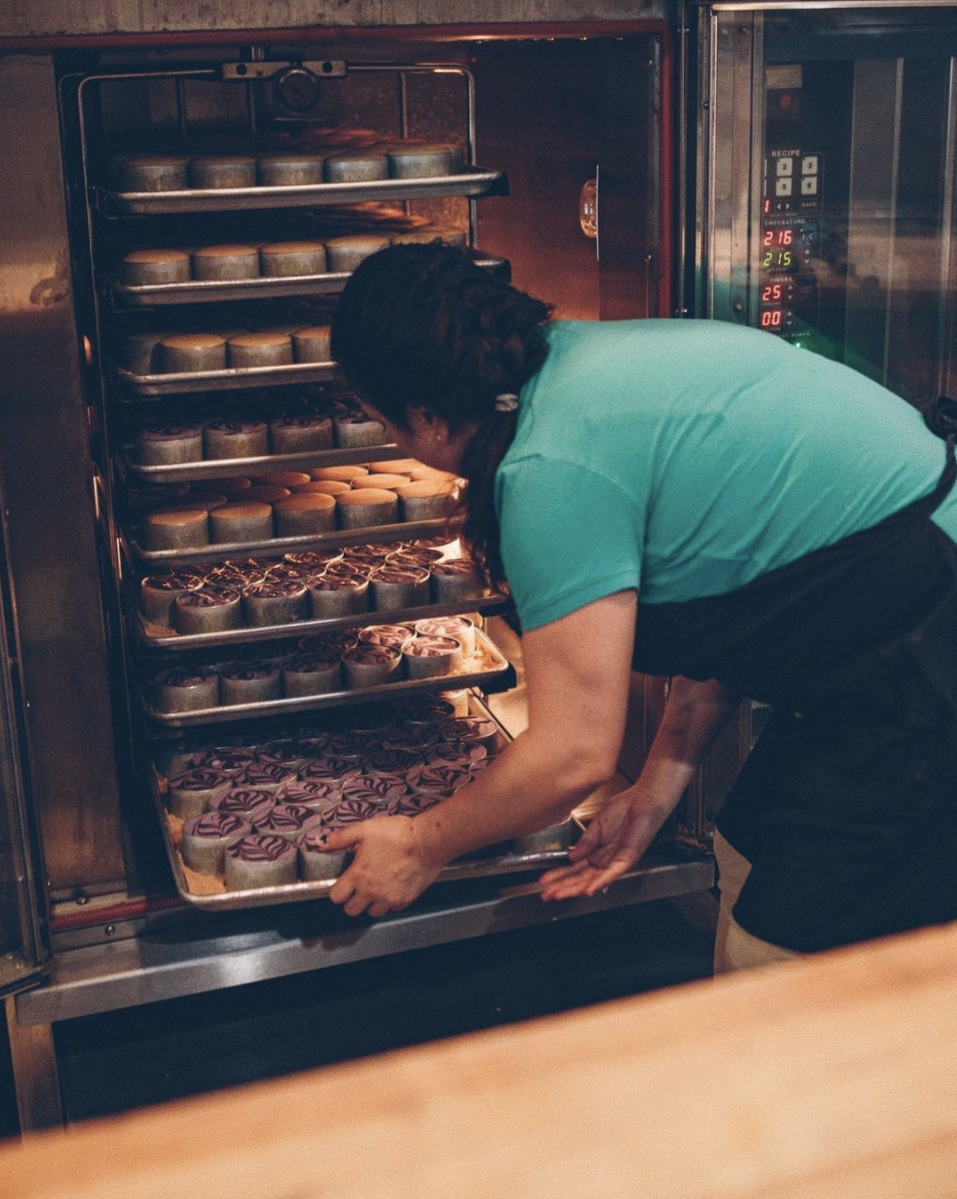
Service Design for Hood Famous Bakeshop

Service Design for Hood Famous Bakeshop.
An audit and redesign of the wholesale service delivery model for a local bakery.
UX Research, Service Design, Stakeholder Read Out
The Problem Statement
Within the context of recent company expansion, followed by the abrupt supply chain impacts of the COVID-19 pandemic, what is the most effective and efficient way to run the wholesale service delivery model?
Key Results

Data-informed decision-making
Based on the research I conducted, I was able to estimate how much revenue each product brings in to the business. This allowed me to present the CEO with a strategy for weekly production that maximized revenue potential, as well as a pathway for scaling up.

More efficient time management
My design solution prioritizes the appropriate flow of information in order to minimize the waste of time, inventory, and staff. Its implementation resulted in smoother shifts for the Head Baker and Delivery Driver, and less time spent troubleshooting for Management.

Increased productivity
As a result of implementing my design solution, the Head Baker (a Subject Matter Expert and user of the service delivery model) was able to make much better use of his time, surpassing my original estimates of production capacity.
How I got there

I conducted qualitative interviews with the staff members most vital to the service delivery model.
Who I spoke to:
Head Baker - a Subject Matter Expert on the cheesecake and cookie dough production process.
Delivery Driver - the person who packages and delivers our products to wholesale clients.
CEO - a Subject Matter Expert all all parts of the service delivery model. This role creates the bake schedule, purchases inventory, sets the delivery schedule, sets production pars, and more.
I crafted guiding questions and recorded my conversations for subsequent analysis. I also had personal experience filling in for each of these roles in the past, which served as somewhat of a built-in ethnographic study to reference.
[Key finding]
“Well, it depends.”
This is a phrase I encountered often during the qualitative interview process. The success of this service delivery model depends on several constantly-changing variables such as inventory availability, vendor hours of operation, wholesale client order quantities, and more. This prompted me to find the aspects of the system that imposed definitive constraints, and then work from there.
[key finding]
A lack of streamlined communication made it almost impossible for the system to run without disruption.
I learned that vital information often remains unknown to the person who needs it, when they need it. This prompted me to create a streamlined schedule for communication based on the Head Baker’s workflow, vendor operating hours (for inventory purchasing and delivery), and the information the CEO requires to make a full, accurate, and executable production schedule..
[key finding]
¡Pandemic pandemonium!
Everyone was effectively running around like chickens with their heads cut off trying to navigate the abrupt affects of lockdown, with no clear end in sight.
We had a sudden reduction in the amount of staff members
A sudden increase in order volume from wholesale clients
Ingredients (especially the imported ones) used to make our signature products became scarce and hard to track down. We were often sending the baker out himself to grab some last minute ingredients.
We needed to safely and strategically pivot the service delivery model while the dine-in part of our business remained closed, and create a pathway for scaling up wholesale production volume.

Creating my design solution and communicating my results
Figure 1 - a sample page from my final deliverable.

I defined what I call our “true maximum capacity” for production.
Staff can produce more than our refrigerators and freezers can hold at one time. When product is taken out to be delivered to clients, space is freed up to store more. This is just one example of the many variables that define our true maximum capacity for production.
Using the true max capacity, I designed a production and fulfillment schedule, and a system of operation to support it.
See Figure 1 for a sample pulled from my final deliverable.
I presented my solution first, and then communicated how I got there.
I took a similar approach to my read out as I did with this case study. When presenting my results to the CEO, I offered a summary of my solution, and then demonstrated how I got there (click through Figure 2 for a sample of slides pulled from my presentation).
Figure 2 - sample slides from presentation
Implementing my solution - we workshopped it
Communicating my recommendations to the CEO in this way equipped her with a solid understanding of my process. This allowed us to dive right in to what it would look like to implement. She let me know what needed to be tweaked or moved around based on her own work schedule, as well as the production pars she set for pivoting our dine-in cafe to a takeout-only location.
Following up
About two weeks after implementation, I followed up with the Head Baker to see how it was working out for him. Not only was he in better spirits, but he was able to surpass my original estimates of production.
“This new schedule makes me very happy… The days I was having before made me very tired and it was like doing more work to make less yummies.”






